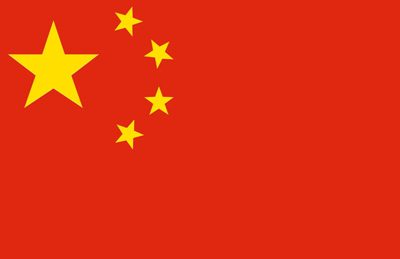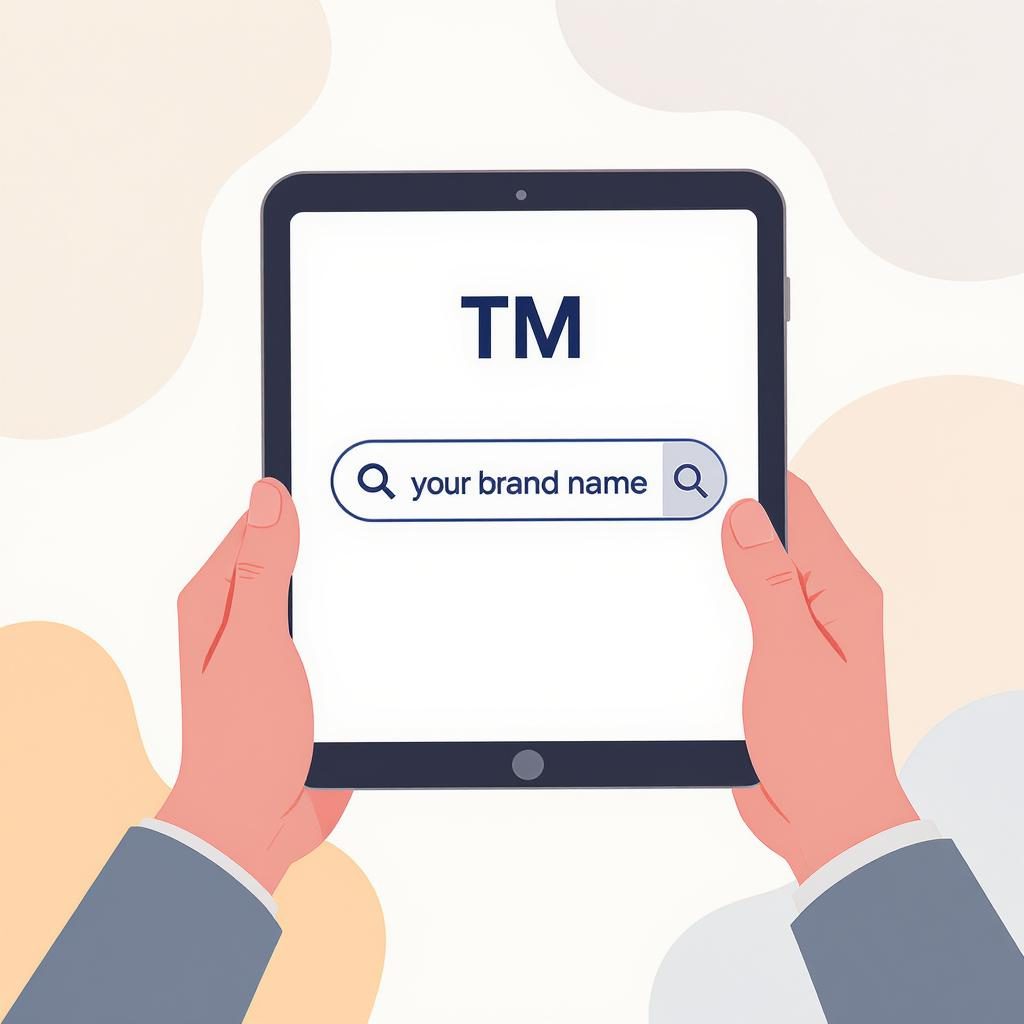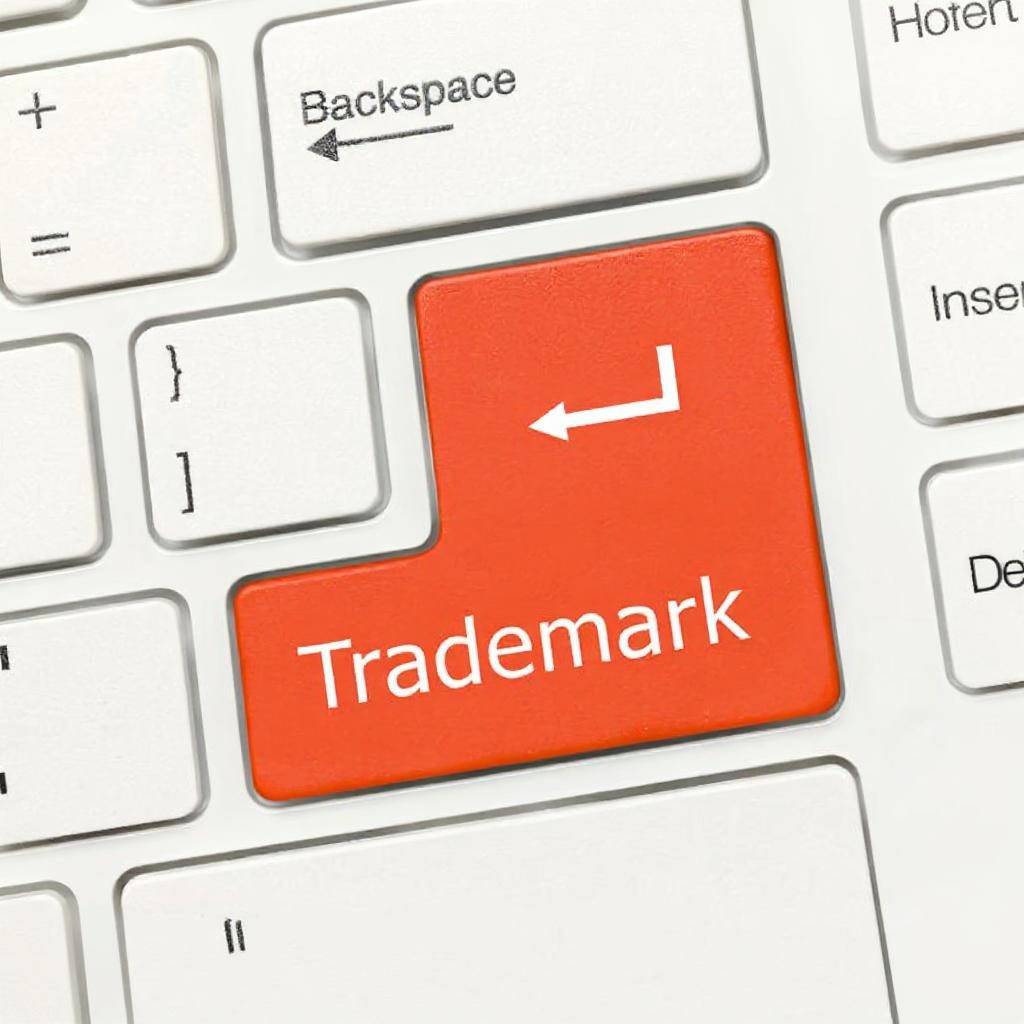
Brand Registration Guide in 2025
In the fast-evolving world of business and intellectual property, timing is everything. Whether you’re launching a startup, building an e-commerce


Planning to expand your business to China? Protect your brand with hassle-free trademark registration in China. We offer clear communication, fast service, and expert support to help you register your trademark smoothly.
With a dedicated Chinese trademark search practitioner in-house, we handle all your legal needs in China — from trademark filing to opposition and litigation. Trust our expertise to guide you through every step of the process.
The prices are in USD$ for China
Covers filing your application and reporting the progress all the way to registration. 2 classes included. This is our entry-level package.
Covers full trademark registration, including reporting and responding to non-substantive examiner’s objections and free re-filing.
Covers all aspects of trademark registration, including responding to all examiner’s objections and free re-filing. More free extras.
We handle the preparation and filing of your trademark application in China, keeping you updated every step of the way until your trademark is successfully registered.
Class Limitations:
The maximum number of items per class is 10, with no additional fees.
For each item above 10, there is an extra charge of $15.
Additional Class Fees:
Our professional fees for each extra class are $200.
With our “ALL IN” package, we provide everything you need for a seamless trademark registration in China:
Government Filing Fees: Included in your package, no hidden costs.
Office Action Responses: We take care of any examiner objections at no additional charge.
Opposition Support: Full representation in case of any trademark opposition.
Free Re-filing: If your application is rejected, we’ll re-file it free of charge.
If an office action is issued during your trademark registration in China, you will be promptly notified. We’ll provide an estimate based on our hourly rate, and wherever possible, we’ll offer a flat fee for your convenience.
If you’re working with limited funds, and our free China trademark registration search didn’t reveal any potential obstacles, we can still move forward with the registration process, ensuring a smooth and affordable experience.
The “ALL IN” package includes everything from the “SAIL THROUGH” package, plus additional services like:
Reporting and responding to non-substantive (procedural) office actions.
Free re-filing if your trademark is refused by the Trademark Office.
With our “SAIL THROUGH” package, we offer free re-filing if your trademark is refused, under specific conditions. While you’ll be responsible for the government fees, we’ll waive the professional fees for the re-filing. For more details, check out our FAQ section.
You can list up to 10 items in a single class without incurring additional fees. For each extra item above 10, there is a charge of $15 per item.
For trademark registration in China, the maximum number of classes allowed is 1. If you need to file in additional classes, our professional fees are $450 per extra class.
With our service, you receive unlimited consultations about your trademark — a value of approximately $250 — ensuring you have expert guidance whenever you need it.
Government fees, substantive office actions, opposition proceedings and additional free extras that you get with “BELLS AND WHISTLES” package.
Our “BELLS AND WHISTLES” package is the most popular choice for businesses looking for peace of mind and budget predictability. It’s the package we highly recommend for trademark registration in China, offering complete coverage and comprehensive support throughout the entire process.
We take care of non-substantive office actions at no extra cost. If your trademark is refused, you’ll have the option to file for a different trademark, and we’ll waive our professional fees for the re-filing, making the process more affordable and stress-free.
If your trademark is refused,
We’ll file another – fee excused.
The “ALL IN Plus” package includes everything in the “ALL IN” package, plus additional services such as:
Reporting and responding to substantive office actions.
Free re-filing if your trademark is refused by the Trademark Office, ensuring continued protection.
With our “ALL IN” package, we offer free re-filing if your trademark is refused. You will be responsible for the government fees, but we will waive our professional fees. For more details on re-filing, please refer to our FAQ section.
You can list up to 10 items in a single class without incurring additional fees. For every extra item above 10, there will be a charge of $15 per item.
The maximum number of classes allowed is 1. If you need to file in additional classes, our professional fees are $1295 per extra class, filed as a separate trademark.
Enjoy unlimited consultations with our experts regarding your trademark — a service valued at approximately $250 — to ensure you have the guidance you need throughout the registration process.
Government fees, opposition proceedings, cancellation proceedings and additional free extras that you get with “BELLS AND WHISTLES” package.
Please note that due to irregular updates from the Chinese Trademark Office, substantive refusals are quite common. That’s why this package is the best choice to ensure comprehensive support and protection throughout the registration process.
We handle all office actions at no additional cost. Furthermore, if your trademark is refused, you have the option to file a different trademark with our professional fees waived. This package offers complete peace of mind and budget predictability. Learn more about why this package is the best choice here.
If your trademark is refused,
We’ll file another – fee excused.
Trademark application (first class): $50
Trademark application (each extra class): $50
Responding to objections: $118

If someone else registers your trademark in China, it could potentially prevent you from using that trademark within the country. Since China follows a first-to-file system, the first person to file a trademark application has exclusive rights to that mark in the country, regardless of whether you were the first to use it.
This means that if another party registers your trademark, they could block you from manufacturing, selling, or shipping products bearing that trademark within China. To avoid this, it’s crucial to register your trademark in China as early as possible to protect your brand and prevent any legal disputes.
A Power of Attorney (POA) is a legal document that authorizes another person or entity to act on your behalf in legal matters. In the context of trademark registration, a Power of Attorney grants your trademark attorney or agent the authority to file, represent, and manage your trademark application on your behalf.
You’ll need to sign a POA when you hire a trademark agent or attorney to file your trademark application in China (or any other jurisdiction). This document is essential because it allows your representative to interact with the trademark office, respond to office actions, and handle any legal matters related to the trademark process.
Without a POA, your attorney or agent cannot legally file or take action regarding your trademark registration.
When you purchase a trademark package with Trademark Focus, we guide you through the entire trademark registration process, ensuring a smooth and efficient experience. Here’s what happens after you make your purchase:
Trademark Search: We begin with a thorough trademark search to check for any potential conflicts or existing trademarks in the jurisdiction you’re filing in. This helps identify possible obstacles before proceeding.
Preparation of Documents: Once the search is complete and there are no issues, we prepare your trademark application, ensuring all necessary details are correctly filled out. This includes your business information, trademark description, and the class or classes for which you’re registering.
Power of Attorney (POA): If required, we will guide you to sign a Power of Attorney (POA), which authorizes us to file and manage your application on your behalf.
Trademark Filing: After everything is prepared, we submit your application to the relevant trademark office (e.g., the China Trademark Office for Chinese registrations). You will receive a filing confirmation once the application is successfully submitted.
Progress Updates: We will keep you informed at every stage, from filing through to any office actions or responses. You’ll always know where your application stands.
Post-Registration Services: If your trademark faces opposition or any objections, we’ll handle those on your behalf and work towards a successful resolution. Additionally, we provide assistance with renewal and maintaining your trademark rights.
es, it is generally recommended to file your trademark in Chinese characters when registering in China. While you can file your trademark in non-Chinese scripts (such as English or other languages), doing so may limit the scope of protection, especially in a market where Chinese characters are primarily used.
Here’s why filing in Chinese characters is beneficial:
Brand Recognition: Having your trademark in Chinese characters helps your brand resonate with local consumers who are familiar with the language and culture.
Legal Protection: If your trademark is only filed in a foreign language (like English), another entity could file a similar trademark in Chinese characters, and it might not be immediately clear that both are related, leading to potential conflicts.
Market Presence: In China, businesses and consumers often expect to see trademarks in Chinese characters to fully understand the brand. This ensures stronger brand identity and recall.
In a trademark application, goods and services are categorized into classes based on the type of products or services you offer. This system is governed by the Nice Classification (NCL), an international system used to classify goods and services for the purposes of registering trademarks.
Class Headings refer to the general categories or titles that describe the types of goods and services within each class. For example, Class 25 covers clothing, footwear, and headgear, while Class 35 covers advertising and business services. Each class contains a list of specific goods or services that fall under that heading.
Here’s a breakdown of the key points:
Goods and Services Classification: There are 45 classes in total — 34 for goods and 11 for services. It’s essential to correctly classify your trademark according to the goods and services it applies to, as your trademark will only be protected within the selected classes.
Class Headings: Each class has a general heading, but this heading does not cover every specific good or service within the class. Therefore, when filing, it’s important to list the precise goods or services your trademark will cover to ensure maximum protection.
Why It Matters: Proper classification ensures that your trademark registration protects the right goods or services and prevents future conflicts with others. Inaccurate classification can lead to limited protection or an incomplete application.
Since August 3, 2019, the United States Patent and Trademark Office (USPTO) requires all foreign-domiciled applicants — meaning anyone based outside of the US — to appoint a licensed US trademark attorney for any filings and proceedings before the USPTO and the Trademark Trial and Appeal Board (TTAB).
We’ve got you covered. We work with a select network of trusted US trademark attorneys who handle filings on behalf of our international clients. Whether you’re starting a new application or already filed on your own, we can take over your case and assign a US attorney to represent you — and we do this at no extra cost.
Unlike many other firms that raised their prices after this rule change, we kept our fees consistent. In every country where we offer trademark services, we ensure your application is submitted by a qualified local attorney or trademark agent, so you’ll always receive proper legal representation.
Whether you should file a word mark or a logo as your trademark depends on your brand strategy and the type of protection you seek. Both options offer different advantages:
A word mark protects the specific name or phrase of your brand in any font, style, or color. This gives you more flexibility and broader protection, as it covers the verbal elements of your trademark, regardless of how it is visually presented.
Advantages:
Flexibility: You can use your trademark in any style, font, or color.
Broader Protection: It protects the wording itself, not the specific design, so it applies regardless of how the name is used.
Easy to Adapt: You can change the logo or visual elements without losing the trademark protection for the word.
When to Choose: If your brand identity relies heavily on the name itself (e.g., Coca-Cola, Google), filing a word mark is a good option.
A logo protects a unique graphic design or image, including specific fonts, colors, shapes, or symbols. This type of trademark gives you protection over how your brand visually appears to consumers.
Advantages:
Visual Identity Protection: If your brand is built around a specific logo or design, it ensures that no one else can use that exact visual representation.
Stronger Branding: A distinctive logo can become a key part of your brand’s identity, making it easier for consumers to recognize you.
When to Choose: If your logo or graphic design is integral to your brand identity, filing a logo trademark can protect it from being used by others.
This is the legal name of your business entity.
It’s registered with your state, provincial, or national government.
It appears on legal documents like incorporation papers, tax filings, and contracts.
Example:Microsoft Corporation 
Important:
One company can own several brands and operate under multiple names.
This is the name you use in the marketplace to sell your products or services.
It may or may not be the same as your company name.
If it’s different, you typically need to register it as a “Doing Business As” (DBA) or “Trade Name.”
Example:Microsoft: ![]() or a combined mark
or a combined mark ![]()
Skype:![]()
This is your address on the internet — the web address people type to visit your website.
It doesn’t give you trademark rights by itself, but it’s a valuable part of your brand identity.
A single company can own multiple domain names for different brands, campaigns, or products.
A trademark is a legally protected brand identifier.
It can be a word, phrase, logo, symbol, sound, color, or even a scent that distinguishes your product or service from others in the market.
Registered trademarks give you exclusive rights to use that mark in connection with specific goods or services.
Incorporating your business or registering a company name does not automatically give you trademark rights to use that name as your brand.
For example, in the US, each state has its own rules for business name registration. If you register an LLC named Coolapples LLC in Delaware, that registration only applies in Delaware. Another business could register Coolapples LLC in Indiana or any other state without infringing on your state-level business name.
This means your state-level company name registration does not protect your brand nationwide.
If you want exclusive, nationwide rights to your brand name—especially if you plan to expand beyond one state—you should register a federal trademark with the United States Patent and Trademark Office (USPTO). This trademark gives you the exclusive legal right to use your brand name for your goods or services across the entire country.
Similarly, if you’re in Canada or Australia, registering a trademark with the respective national trademark office will give you country-wide protection and make it easier to sell, license, or enforce your rights to your brand.
Yes, you can legally use a trademark even if it isn’t registered. In fact, in many countries like the US, trademark rights are based primarily on actual use in commerce, not just registration. This is called common law trademark rights and gives you some protection within the geographic area where you use your mark.
However, there are important risks:
If someone else has already been using a similar or identical mark before you (whether registered or not), you may be infringing on their rights and could face legal action.
Without registration, your rights are limited and harder to enforce nationwide or internationally.
Registration provides stronger legal protection, public notice, and easier enforcement.
The trademark registration process in China typically takes 9 to 12 months from the date of filing. This includes the following key stages:
Initial Examination: The Chinese Trademark Office (CTMO) will first examine your application for formal requirements (approximately 1–2 months).
Substantive Examination: The CTMO will then check whether your trademark complies with China’s trademark laws (approximately 6–8 months).
Publication: If there are no issues, your trademark will be published in the Trademark Gazette for a 3-month opposition period. During this time, third parties can file objections if they believe the trademark conflicts with their rights.
Registration: If there are no oppositions or objections, your trademark will be officially registered, and a certificate will be issued.
Yes, you can register a foreign trademark in China. China allows foreign businesses and individuals to apply for trademark registration, even if they do not have a physical presence in the country.
However, there are a few key points to consider:
First-to-File System: China operates on a “first-to-file” system, meaning that the first person to register the trademark has the exclusive rights, regardless of who was the first to use it. Therefore, it’s crucial to file your trademark as soon as possible to prevent others from registering the same or similar mark.
Local Representation: Foreign applicants are required to appoint a local representative (trademark agent or attorney) in China to handle the registration process. This agent will file the application, communicate with the China Trademark Office, and assist with any legal issues that may arise.
Chinese Translation: If your trademark includes non-Chinese characters, it is recommended to register a Chinese translation or transliteration of your trademark for better protection. This can also help local consumers easily recognize and relate to your brand.
Class System: Be aware of China’s Nice Classification for goods and services, and make sure to select the appropriate class (or classes) for your trademark.
Trademarks may be filed at the state or federal level. State trademarks protect your mark in a specific state while federal trademarks protect your mark in all the states. State trademarks generally provide less legal protection than federal trademarks. Businesses operating in only one state should trademark in that state. Businesses operating in interstate commerce may file for a federal trademark. For example, if you operate a restaurant or a hair-dressing salon in Florida, you are not eligible for a federal trademark. In this case, you should apply for a trademark in the state of Florida. However, if you have two or more restaurant locations in more than one state, in our case, one in Florida and one in Georgia, you are eligible for a federal trademark. A business intending on expanding nationally or internationally should conduct a trademark search and file a federal trademark as soon as possible.
The “first-to-file” system in China means that the first person to file a trademark application has the exclusive rights to that trademark, regardless of who was the first to actually use the mark in the marketplace. This system is different from a “first-to-use“ system, where the first person to use the trademark in commerce gets the rights.
Speed is Crucial: Since China operates under a first-to-file system, it’s critical to file your trademark as soon as possible to secure exclusive rights to it. If someone else files for your trademark before you, they could obtain the rights, and you might not be able to register it — even if you’ve been using it first.
No Use Requirement: Unlike some countries, China does not require proof of use for registration. This means someone can register your trademark without ever using it, which may lead to potential conflicts if you’re already using the mark in the country.
Legal Protection: By registering your trademark early, you ensure legal protection in China. If you wait too long, you risk competitors or other entities claiming your trademark and preventing you from using or protecting it.
Trademark Strategy: It’s important to file your trademark in China as part of your international trademark strategy, especially if you plan to expand or do business in the country. Early registration gives you a stronger foothold in the market.
| Rank | Country | Average Time to Register | Notes |
|---|---|---|---|
| 1️⃣ | Germany | 1–3 months | Fastest. Can register within 1 month with accelerated examination. Occasionally unpredictable. |
| 2️⃣ | United Kingdom | 3.5–4 months | Consistent and low government fees. |
| 3️⃣ | European Union (EU) | 3.5–7 months | 3.5–4 months via “fast-track”; regular filings take 6–7 months. Higher government fees. |
| 4️⃣ | Mexico | 4–8 months | Can fluctuate; some applications take longer. |
| 5️⃣ | Australia | 7.5–12 months | Most trademarks register within a year if no objections. |
| 6️⃣ | China | 9–12 months | Appeals can delay by 8+ months. Improving timelines. |
| 7️⃣ | India | 10–12 months | Similar to China in average timelines. |
| 8️⃣ | United States | 12–14+ months | Often delayed by office actions. Can exceed a year easily. |
| 9️⃣ | Japan | 10–14 months | Fairly steady timeline. |
| 🔟 | Brazil | 12–18 months | Among the slower countries for registration. |
| 1️⃣1️⃣ | Canada | 36–42 months | Slowest. Pandemic delays made it worse. Expected to improve post-Madrid Protocol membership. |
A specimen of use is real-world proof showing how your trademark is actually used in connection with the goods or services you provide in the marketplace. It’s a requirement when filing certain types of U.S. trademark applications and during post-registration maintenance.
You must show your trademark directly on the product or its packaging. Acceptable specimens include:
Product labels
Tags attached to the product
Product packaging
Instruction manuals
Photographs showing the product with the mark visible
🔴 Not allowed: Drawings, mockups, or promotional ads alone — they don’t count for goods.
You need to prove your mark is publicly used when offering your services. Acceptable specimens include:
A screenshot of your website showing the trademark prominently (usually in the header) along with a description of your services.
Brochures, flyers, or online ads offering the services with your mark clearly visible.
Business cards or signage photos displaying your trademark alongside the services provided.
Submitting the correct type of specimen is crucial — the USPTO can refuse your application if the specimen doesn’t meet their requirements. It must reflect how your trademark appears in actual, day-to-day commercial use.
Yes, you can register a trademark in China even if you don’t have a physical presence in the country. China allows foreign individuals and businesses to file for trademark protection through a local representative (a trademark agent or attorney). You do not need to have an office, store, or any physical presence in China to register a trademark.
Local Representation: As a foreign applicant, you’ll need to appoint a Chinese trademark agent or attorney who will act on your behalf. This agent will file the application, handle correspondence, and represent you before the China Trademark Office (CTMO).
Trademark Application: You can file the trademark application directly with the China National Intellectual Property Administration (CNIPA), which is the authority responsible for trademarks in China.
International Treaties: If your country is a member of the Madrid Protocol, you may also use the Madrid System to file an international trademark application that designates China, making the process easier and more streamlined.
First-to-File System: Since China follows a first-to-file system, it’s crucial to register your trademark early to prevent others from registering it before you.
Language: Although you can file in English or other languages, it’s advisable to provide a Chinese translation of your trademark for better protection and to align with local market expectations.
Class System: You must also choose the appropriate class or classes for your trademark, based on the Nice Classification system.

In the fast-evolving world of business and intellectual property, timing is everything. Whether you’re launching a startup, building an e-commerce

In today’s competitive business environment, protecting your brand identity is not just a legal necessity—it’s a strategic move that can

In today’s fast-paced and highly competitive business world, building a brand that stands out is no easy task. From your
Trademark Focus is a trusted trademark registration firm with more than 10 years of expertise. We specialize in handling trademark applications and protection services across Canada, the US, and internationally.
No.518, Jianshe Avenue, Jianghan District, Wuhan, Hubei Province